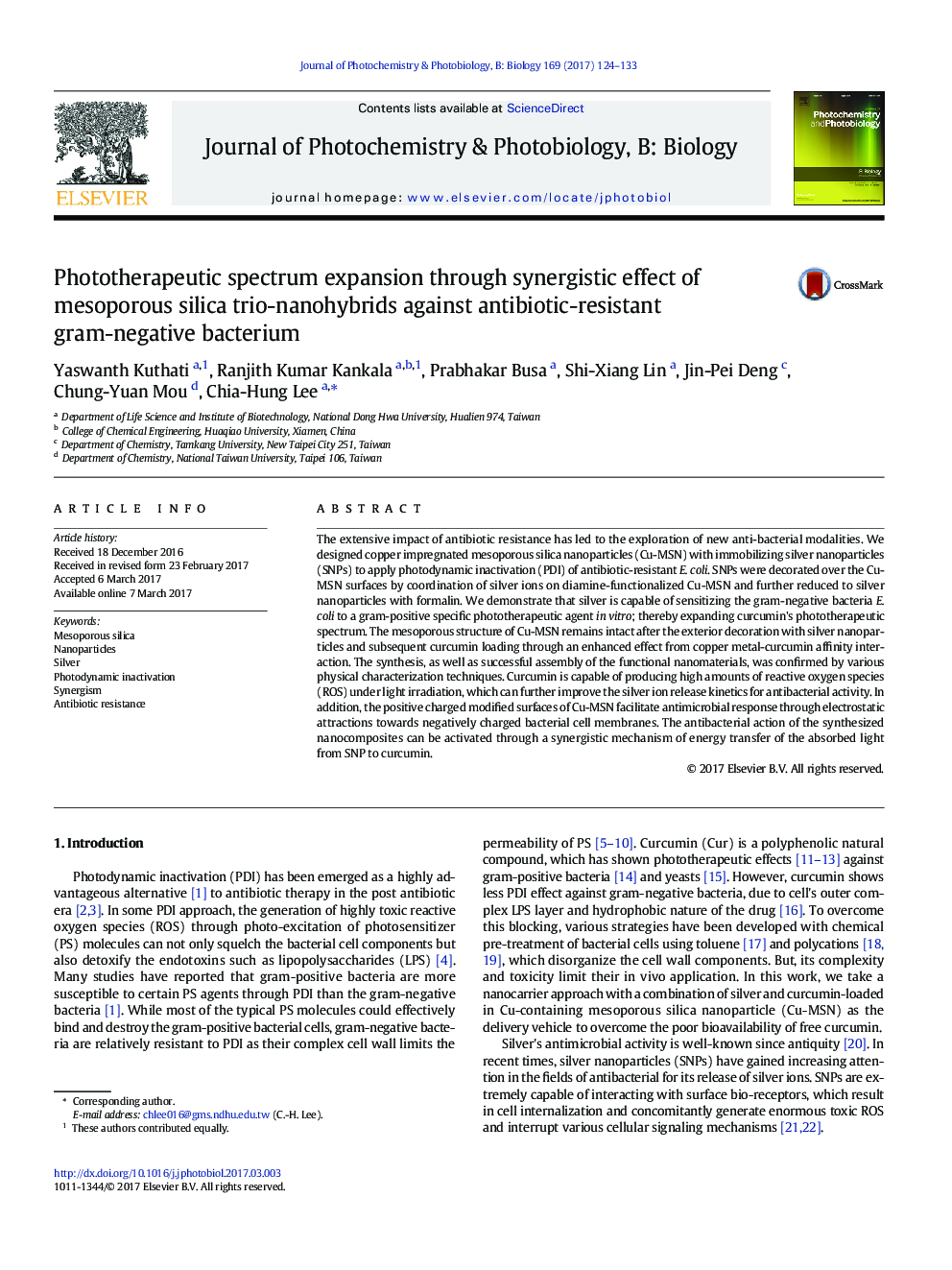| کد مقاله | کد نشریه | سال انتشار | مقاله انگلیسی | نسخه تمام متن |
|---|---|---|---|---|
| 4754516 | 1418064 | 2017 | 10 صفحه PDF | دانلود رایگان |
- SNP decorated Cu-MSNs are well characterized using various techniques for Trio-therapy.
- Immobilized curcumin produces enormous ROS levels under light irradiation.
- Singlet oxygen from curcumin enhances the release kinetics of silver.
- SNP sensitization expands phototherapeutic spectrum of curcumin against bacterial resistant strains.
The extensive impact of antibiotic resistance has led to the exploration of new anti-bacterial modalities. We designed copper impregnated mesoporous silica nanoparticles (Cu-MSN) with immobilizing silver nanoparticles (SNPs) to apply photodynamic inactivation (PDI) of antibiotic-resistant E. coli. SNPs were decorated over the Cu-MSN surfaces by coordination of silver ions on diamine-functionalized Cu-MSN and further reduced to silver nanoparticles with formalin. We demonstrate that silver is capable of sensitizing the gram-negative bacteria E. coli to a gram-positive specific phototherapeutic agent in vitro; thereby expanding curcumin's phototherapeutic spectrum. The mesoporous structure of Cu-MSN remains intact after the exterior decoration with silver nanoparticles and subsequent curcumin loading through an enhanced effect from copper metal-curcumin affinity interaction. The synthesis, as well as successful assembly of the functional nanomaterials, was confirmed by various physical characterization techniques. Curcumin is capable of producing high amounts of reactive oxygen species (ROS) under light irradiation, which can further improve the silver ion release kinetics for antibacterial activity. In addition, the positive charged modified surfaces of Cu-MSN facilitate antimicrobial response through electrostatic attractions towards negatively charged bacterial cell membranes. The antibacterial action of the synthesized nanocomposites can be activated through a synergistic mechanism of energy transfer of the absorbed light from SNP to curcumin.
Journal: Journal of Photochemistry and Photobiology B: Biology - Volume 169, April 2017, Pages 124-133
